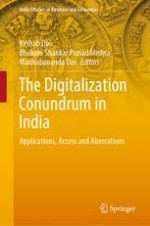2020 | OriginalPaper | Chapter
11. Future of Work in Information Technology and the Analytics Industry: Understanding the Demand
Author : Nausheen Nizami
Published in: The Digitalization Conundrum in India
Publisher: Springer Singapore
Activate our intelligent search to find suitable subject content or patents.
Select sections of text to find matching patents with Artificial Intelligence. powered by
Select sections of text to find additional relevant content using AI-assisted search. powered by
